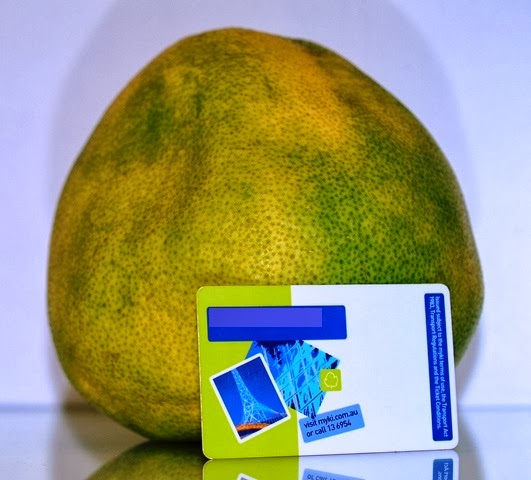Tempted by the pomelo's sweet flesh but not thick albedo
I do like my grapefruits. Juice in the morning, and every now and then, one cut up as an evening snack. These days I'm a convert to the Ruby Grapefruit.
So I was pretty excited about seeing pink-fleshed pomelos, ancestors of the grapefruit, in the Singapore markets during the 15 days of New Year festivities in mid-February. The pomelo featured, along with Durian, as a special New Year fruit. Big and showy I guess, and the perfect gift. The pomelos are also bought in pairs to be made as an offering during New Year prayers.
That said, it's oranges and tangerines that are considered fruits of good luck for New Year. That's because, I gather, their names translate into Mandarin as something like 'luck'. Although it seems any orange-coloured citrus will do, and you most often see pairs of mandarins on a shop bench or a potted cumquat outside shops (and here in Singapore's Botanic Gardens).
But today it's all about the pomelo, or shaddock, a native of south-east Asia now grown widely in the tropics for its great big, citrusy, fruits.
There are various cultivars and the one I spotted was probably a Tambun Pink, originating from a farm further north in Malaysia.
At five Singapore dollars ($4.40 Australian) this was not a cheap citrus. In fact I shopped around to find this $5 bargain - $8 was the more common price and they are always in demand and expensive at this time of year. So I took my $5 fruit back to the hotel room to examine and eat.
The first thing you have to do is peel off the outer skin and rather thick albedo. The albedo is the white 'pith' under the skin of the pomelo. Rich in dietary fibre and other nice bits and pieces (antioxidants of course), this spongy substance is now being added to food, and burgers, as a supplement for good health. When eating a pomelo, or indeed any citrus, my preference is to discard as much of the albedo as possible.
There are websites explaining how to peel a pomelo, usually involving a sharp knife, but in my Singapore hotel room I attacked it with my bare hands. It wasn't pretty, but I got there.
The juicy cells inside the pulp looked, juicy. They were tantalisingly plump. I was expecting a bit hit of tangy sweetness: I know that while grapefruits are bitter in taste they also pack a lot of sugar as well. But given the pomelo (Citrus maxima) is one of the parents of the grapefruit (Citrus x aurantium), the other being our more common sweet orange (Citrus 'valencia'/Citrus x sinensis), I thought it might be more down the bitter end, perhaps more like a lemon (Citrus x limon).
What a let down. My pomelo didn't taste awful, it just didn't taste. Not bitter, not sweet, not interesting, just nothing much at all. Perhaps I should have paid the extra $3? Or perhaps I should have eaten it as part of a traditional New Year 8-times-tossed, raw-fish salad like this one I enjoyed with the staff of Gardens by the Bay last month. Next time.
Images: the fruit and its deconstruction are from my recent trip to Singapore to visit the wonderful Gardens by the Bay. The fruits peeled in a basket, with other citrus nearby, are from a market in Dalat, Vietnam, visited in 2005. The pomelo trees are also from Vietnam, in Hanoi. The scale object in the unpeeled and peeled fruit pictures is a Myki Card, a credit-card-sized object used to ride trains, trams and buses in Melbourne. If you want to know more about the scientific names of various citrus fruits see David Mabberley's 1997 review.









Comments